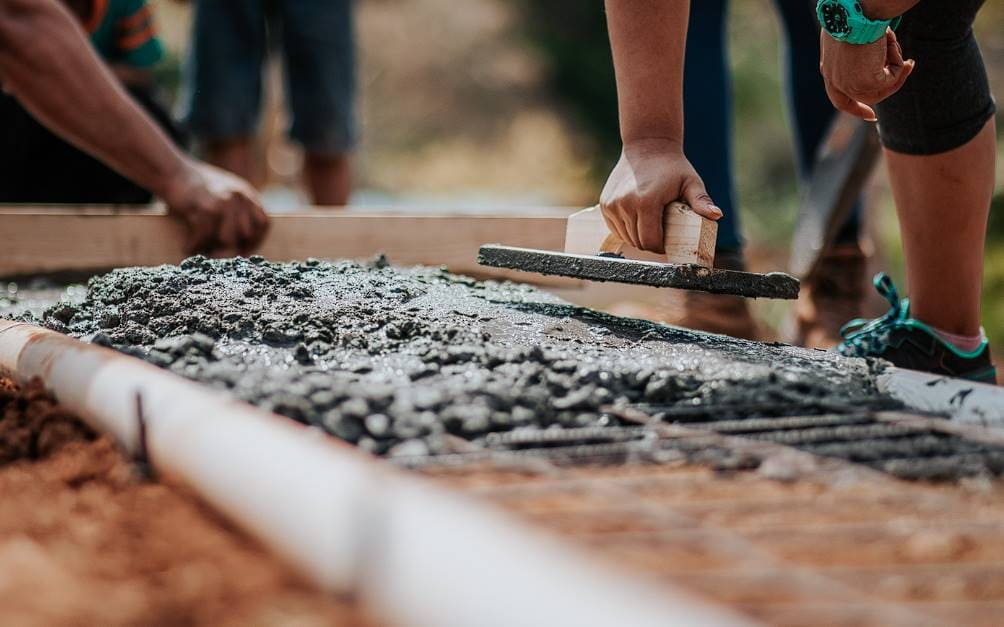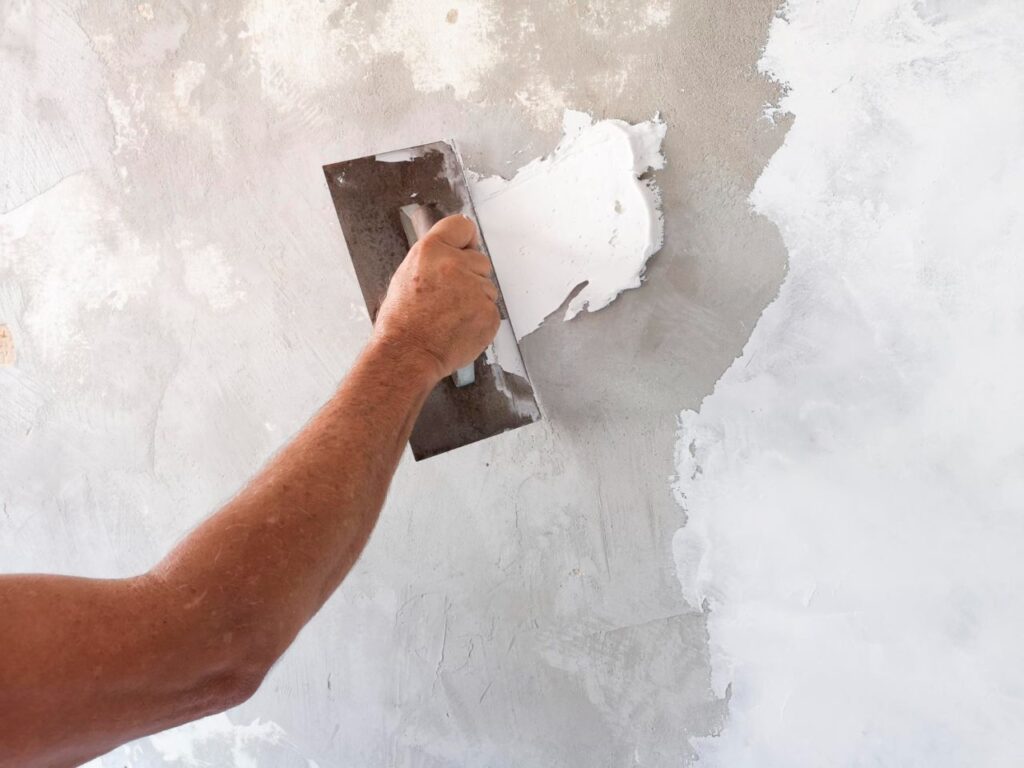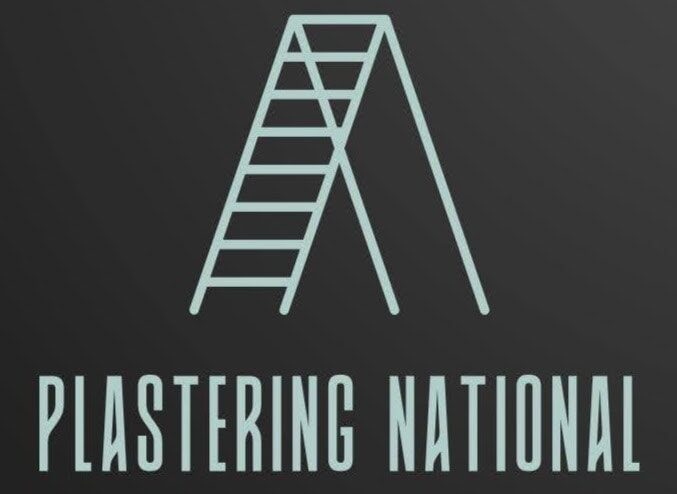Plastering is a traditional method of finishing walls and ceilings, offering a smooth, durable, and aesthetically pleasing surface. It is a popular choice for many homeowners and businesses due to its longevity and aesthetic appeal.
However, plastering services come with several disadvantages that should be carefully considered. These include high plastering costs, time-consuming processes, environmental concerns, and challenges with repairs and maintenance.
In this guide, we will explore the negative aspects of plastering, focusing on key areas such as plastering costs, drying times, and the expertise required.
Let’s Get Straight To The Point
Plastering offers a durable and aesthetically pleasing finish for walls and ceilings, but it comes with several drawbacks. It is a time-consuming process with long drying times, requiring skilled plasterers and multiple coats of plaster.
Repairs can be complex and costly, especially when cracks or damage occur. Plastering also involves high material and labour costs, and is vulnerable to cracks due to its rigid nature. Environmental impacts, such as carbon emissions from plaster production and disposal waste, should also be considered. Despite these challenges, plastering remains a valuable option for those willing to invest in quality materials and skilled professionals, particularly for projects that require durability and aesthetic appeal.
1. Time-Consuming Process
One of the most significant drawbacks of plastering is the time it takes to complete the process. Whether you are considering wall plastering or ceiling plastering, there are several factors that contribute to the extended timeline.
Plaster Drying Time
The drying time for plaster is typically longer than that of other wall and ceiling finishing methods, such as drywall. Plaster drying time can extend from several days to weeks, depending on factors like temperature and humidity. This slow drying process is essential to ensure proper adhesion and structural integrity.
However, it can significantly delay the completion of a project. For those who are working with a tight schedule, this extended plaster drying time can cause frustration and disrupt construction timelines.
Labour-Intensive Application
Unlike drywall installation, which can be completed quickly by a general contractor, plastering requires multiple layers, each of which must be applied meticulously. Skilled plasterers are needed for the application, which involves a base coat for adhesion, a middle coat for bonding, and a final finish coat to smooth out imperfections.
Each layer must be given enough time to dry before the next one is applied. The need for multiple layers adds considerable time to the overall project, making plastering a more labour-intensive process.
Complicated Plastering Repairs
Another challenge with plastering is the complexity of plaster repairs. If plaster walls or ceilings become damaged, repairs can be more time-consuming and costly than drywall repairs. Cracks in plaster typically require a large section of the material to be removed before repairs can be carried out.
Additionally, matching the existing texture and finish can be difficult, especially if the original plastering techniques were unique or intricate. This process requires expertise, and as such, plaster repairs can be costly and complex to complete.
2. Vulnerability to Cracks and Damage
While plaster is known for its durability, it is still prone to cracks and other forms of damage. There are several reasons why plastered walls and ceilings may develop issues over time.
Inherent Material Weaknesses
Plaster is a rigid material that does not have the flexibility of drywall. This means that plaster is more susceptible to cracking when there are shifts or changes in the building’s structure, such as settling or temperature fluctuations. Even small movements in the building can cause plaster to crack.
This issue is especially prevalent in residential plastering projects where structural changes over time can impact the integrity of the plaster. For more substantial commercial plastering projects, the likelihood of plaster damage can increase if the building is subjected to greater wear and tear.
Structural Movement and Subsidence
Cracking in plaster can also indicate more significant structural problems. Subsidence, which occurs when the ground beneath a building shifts, can cause movement in the foundation. This can lead to large cracks in the plaster that are often vertical or diagonal.
These types of cracks not only affect the aesthetic appeal of the plaster but can also be a sign of serious structural damage. If subsidence is the cause, immediate action should be taken by a qualified professional to address both the plaster damage and the underlying structural issue.
Environmental Factors
Environmental factors such as humidity, temperature changes, and even nearby vibrations from traffic can contribute to cracks in plaster. Homes in high-humidity areas or near busy roads may experience more frequent plaster damage.
Excess moisture can weaken the bond between plaster and the underlying surface, leading to the material degrading over time. For those living in such environments, moisture-resistant plastering materials can help mitigate this issue and prevent long-term damage.
3. High Labour and Material Costs
Plastering can be a costly option compared to other wall and ceiling finishing methods. The high costs are due to the need for specialised plastering materials and skilled labour.
Cost of Plastering Materials
Plastering services involve the use of specialised plastering materials, such as gypsum, lime, or cement, which tend to be more expensive than the materials used for drywall.
Additionally, plastering requires multiple coats, further increasing the amount of material needed for each project. This results in higher material costs compared to drywall or other alternatives.
Increased Labour Costs
Due to the skill and expertise required for plaster application, hiring a plastering contractor is often more expensive than hiring a general contractor for drywall. Skilled plasterers are in demand, and their expertise comes at a premium.
The complexity of plastering, especially for intricate ceiling plastering or wall plastering designs, means that only highly trained professionals can perform the work. This makes plastering projects more expensive, particularly for larger spaces or projects requiring detailed finishes.
Regional Cost Variations
The cost of plastering can vary depending on the region and availability of skilled plasterers. In some areas, the demand for skilled plasterers may be higher, driving up the overall plastering cost.
For example, for a standard 100-square-foot area, plastering costs may range from $450 to $550. For projects with higher ceilings or more intricate designs, costs can exceed $1,200. Regional differences in cost should be taken into consideration when planning a plastering project.
4. Environmental Considerations
Plastering is not without its environmental impacts, especially in the areas of production and disposal.
Carbon Emissions from Plaster Production
Plaster is produced by heating gypsum to high temperatures, an energy-intensive process that releases carbon dioxide into the atmosphere. This energy consumption contributes to the carbon footprint of plastering materials, raising concerns about the sustainability of plaster production.
As more eco-friendly plastering materials become available, there is a growing demand for alternatives that reduce environmental impact. Eco-friendly plastering options, such as lime plaster, offer a more sustainable choice for environmentally conscious builders.
Waste and Disposal Issues
Plastering materials can generate a significant amount of waste, especially during renovations or demolitions. Removing plaster can produce large amounts of debris, which often ends up in landfills.
While gypsum, the main component of plaster, is naturally occurring, its disposal still contributes to waste. For large-scale commercial plastering projects or home renovations, finding eco-friendly disposal methods is essential to reduce the environmental impact.
Moisture-Sensitivity
Plaster is sensitive to moisture, and prolonged exposure to water can cause it to weaken and crack. In areas where humidity levels are high, moisture-resistant plastering materials are recommended to ensure the durability of the plastered surfaces.
Moisture-resistant plastering techniques help to prevent water absorption, reducing the likelihood of damage and extending the lifespan of the plaster.
5. Skill and Expertise Required
Plastering is a skilled trade that requires significant expertise, which can limit its accessibility for many homeowners and contractors.
Highly Skilled Labour
Unlike drywall installation, which can be completed by less experienced workers, plastering requires a high level of craftsmanship. Plasterers must apply each layer with precision and care to ensure a smooth and durable finish.
As a result, the demand for skilled plasterers is high, and finding qualified professionals can be a challenge. The expertise required for plastering preparation and installation often leads to longer project timelines and higher costs.
Training and Experience Gap
As alternative construction methods like drywall have become more common, fewer professionals are being trained in traditional plastering techniques. This has resulted in a shortage of skilled plasterers in many regions, which can cause delays and drive up costs for plastering projects.
This training gap makes it challenging for homeowners and contractors to find experienced plasterers for larger or more intricate plastering repairs.
Project Delays
Due to the specialised nature of plastering, projects often experience delays, especially if plaster repairs are needed during the process. Plastering cannot be rushed without compromising quality, and the detailed nature of the work requires precision.
Additionally, the scarcity of skilled plasterers can result in delays, particularly if repairs or modifications are required in the middle of a project.
Conclusion
Plastering remains a popular method for creating durable, aesthetically pleasing finishes on walls and ceilings. It offers benefits such as sound insulation, fire resistance, and a unique visual appeal that other materials, like drywall, cannot replicate.
However, the challenges associated with plastering, such as high costs, long drying times, and the need for skilled plasterers, may make it less suitable for some projects. For those willing to invest in skilled plastering contractors and take into account the plastering cost, this method can create lasting and beautiful finishes that enhance the value of a home or commercial space.
However, for projects with tighter budgets or shorter timelines, drywall or other alternatives may be more practical. Understanding the benefits and drawbacks of plastering, including the need for plastering maintenance and repair, will help homeowners and contractors make informed decisions about their wall and ceiling finishes.
By carefully considering the time, costs, and environmental factors involved, you can determine whether plastering is the right choice for your next project, and ensure a successful and lasting result.
FAQs About Plasterer
What Are The Main Disadvantages Of Plastering Compared To Other Wall Finishing Methods?
Plastering is often more time-consuming, labour-intensive, and costly compared to alternatives like drywall.
Why Is Plastering Considered Labour-Intensive?
Plastering involves multiple steps such as preparation of surfaces, applying plaster coats, and finishing, all of which require manual labour and skill.
What Are The Cost Implications Of Choosing Plastering For Wall Finishing?
Plastering tends to be more expensive due to the skilled labour required and the time-intensive nature of the process.
How Does Plastering’s Extended Curing Time Affect Construction Schedules?
The prolonged curing time of plaster can delay subsequent construction activities like painting or further treatments, impacting project timelines.
Is Repairing Plaster Walls More Challenging Than Repairing Other Wall Materials?
Yes, repairing plaster walls can be complex and time-consuming, often requiring the expertise of skilled plasterers to match textures and finishes.



